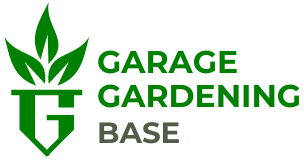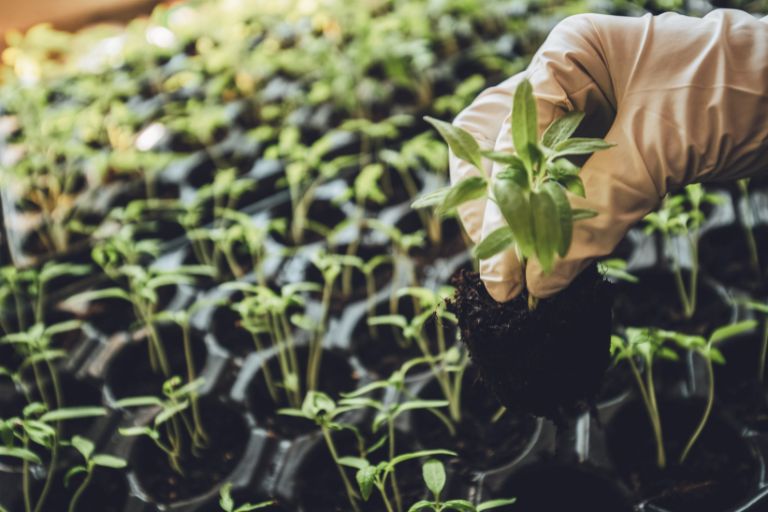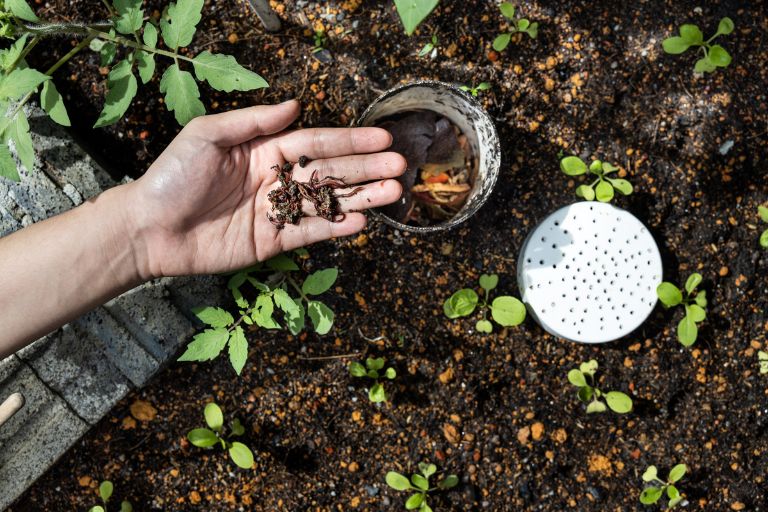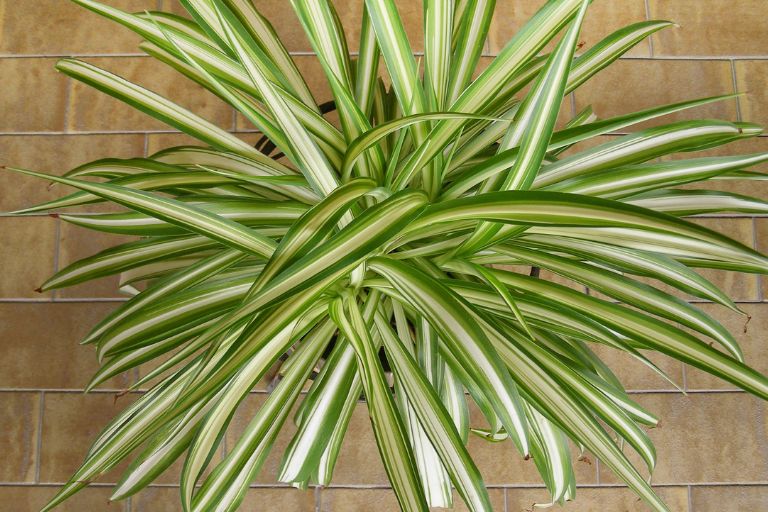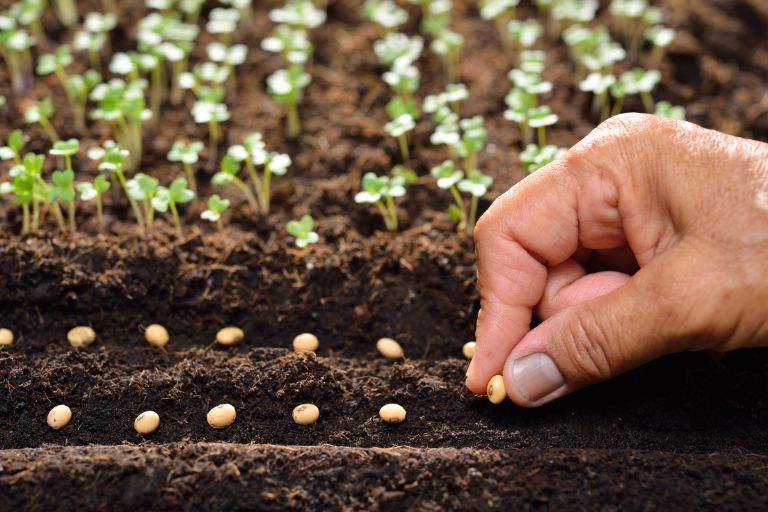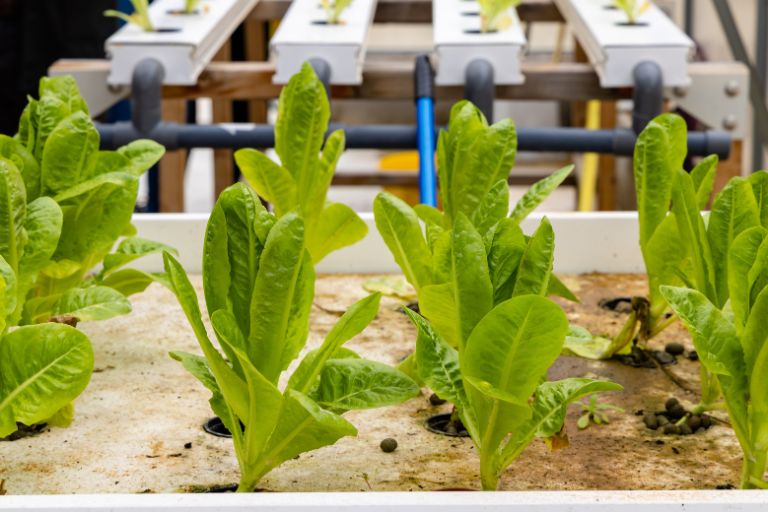Mastering Humidity: Essential Tips for Garage Gardening Success
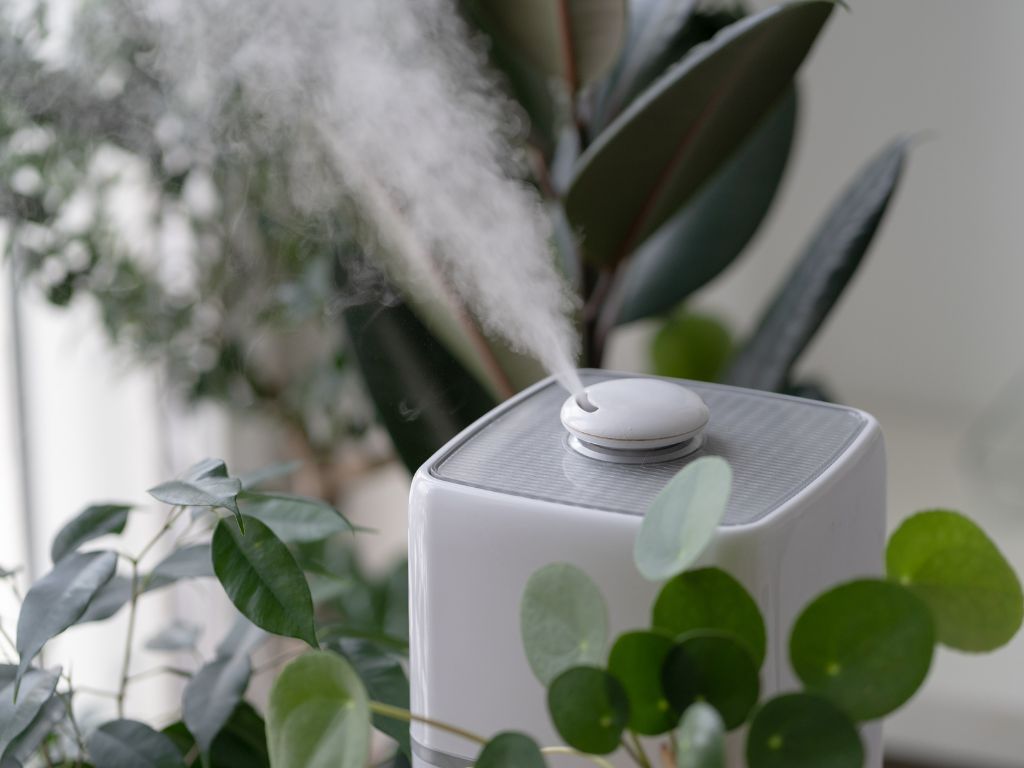
Entering the world of garage gardening opens the door to limitless possibilities, transforming urban spaces into thriving havens of greenery and life. But amidst the excitement of cultivating vibrant indoor gardens, one often overlooked aspect holds the key to unlocking the full potential of these botanical sanctuaries: humidity management.
Humidity, the often subtle but crucial component of an indoor gardening environment, has a significant impact on the health, growth and vitality of our beloved plants. Within the confines of a garage, where environmental variables can fluctuate unpredictably, mastering humidity becomes not just a preference, but a necessity for gardeners striving for excellence.
In this comprehensive guide, we embark on a journey to unravel the mysteries of humidity management in garage gardening. From understanding the fundamental role of moisture in plant physiology to exploring innovative techniques and DIY solutions, we arm ourselves with the knowledge and tools needed to create optimal growing conditions within the confines of our garage sanctuaries.
Whether you’re an experienced gardener looking to fine-tune your indoor oasis or a novice looking to nurture your first green companions, join us as we delve into the intricate world of humidity regulation. Together, we’ll cultivate not only thriving gardens, but a deeper connection to the natural world that flourishes within our garage walls.
Understanding Humidity
Humidity plays a pivotal role in the growth and well-being of plants, serving as a fundamental environmental factor that directly influences various aspects of their physiology and development. Understanding the importance of humidity is essential for the garage gardener, as fluctuating humidity levels can have a profound effect on the health and productivity of indoor plants.
Water uptake and transpiration
– Adequate humidity is essential for plants to efficiently absorb water and essential nutrients from the soil through their roots.
– In addition, humidity affects the process of transpiration, whereby plants release water vapour through tiny pores called stomata on their leaves.
– Optimal humidity levels ensure a balance between water uptake and transpiration, preventing excessive water loss and maintaining proper hydration levels within the plant.
Respiration and photosynthesis
– Humidity affects plant respiration, the process by which plants convert stored energy into usable forms, and photosynthesis, the process by which they use light energy to produce sugars.
– High levels of humidity can impede the exchange of gases, hindering respiration and reducing the rate of photosynthesis. Conversely, low humidity can accelerate water loss through transpiration, potentially leading to wilting and reduced photosynthetic efficiency.
Stomatal regulation
– Plants regulate their stomatal openings in response to environmental cues, including humidity, to optimise gas exchange and water retention.
– High humidity often causes stomata to remain closed, reducing water loss but potentially limiting carbon dioxide uptake for photosynthesis.
– Conversely, low humidity can cause stomata to open wider, increasing water loss but allowing greater carbon dioxide uptake. However, prolonged exposure to low humidity can lead to excessive transpiration and water stress.
Disease and pest susceptibility
– Humidity levels have a significant effect on the prevalence of plant diseases and pest infestations.
– High humidity levels favour fungal diseases such as powdery mildew and botrytis, while low humidity levels can increase susceptibility to spider mites and certain pests.
– Maintaining optimum humidity levels helps to reduce the risk of plant pathogens and pests, promoting healthier plant growth and reducing the need for chemical intervention.
In the context of garage gardening, where environmental control can be more difficult than in traditional outdoor environments, fluctuating humidity levels present unique challenges. Poor ventilation, limited air circulation and temperature fluctuations inherent to garage environments can exacerbate humidity fluctuations, leading to stress and sub-optimal growth conditions for indoor plants. Garage gardeners must therefore prioritise humidity management as a fundamental aspect of their indoor gardening practices.
Challenges in Garage Gardening
Maintaining optimal humidity levels in garage environments presents unique challenges for gardeners due to several factors unique to these spaces. The following are some of the specific challenges associated with humidity management in garage gardening:
Poor ventilation
– Garages often have limited ventilation compared to other indoor spaces, which can result in stagnant air and poor air circulation.
– Poor ventilation hinders the exchange of indoor and outdoor air, making it difficult to effectively regulate humidity levels.
– Stagnant air can lead to pockets of high humidity, especially in areas with poor airflow, increasing the risk of mould growth on plant foliage and surfaces.
Limited climate control
– Many garages lack proper insulation and climate control systems, making them susceptible to temperature fluctuations throughout the day and night.
– Temperature variations can affect humidity levels as warm air holds more moisture than cold air. Fluctuating temperatures can cause condensation to form on surfaces, contributing to moisture build-up and potential humidity spikes.
– Without adequate heating or cooling mechanisms, garage environments can experience temperature extremes that exacerbate humidity-related problems such as excessive moisture evaporation or condensation.
External environmental factors
– Garages are often directly exposed to outdoor conditions, with minimal barriers to environmental elements such as sunlight, wind and precipitation.
– External factors such as seasonal weather patterns, fluctuations in outdoor humidity levels and changes in atmospheric pressure can affect indoor humidity levels, making it difficult to maintain a consistent garage gardening environment.
– Rainfall, snowmelt or high outdoor humidity can bring excess moisture into the garage environment, raising indoor humidity levels and creating conditions conducive to mould growth and plant disease.
Limited space and organisation
– Space constraints in garages can limit the ability to optimally position plants and humidity control devices.
– Overcrowding and poor organisation can impede airflow and hinder humidity control efforts, resulting in uneven moisture distribution throughout the indoor garden space.
– Cluttered areas can also block vents and air circulation pathways, exacerbating humidity problems and compromising plant health.
Seasonal variations
– Seasonal changes can have a significant impact on humidity levels in garage environments, with fluctuations occurring in response to shifts in temperature, humidity and daylight hours.
– During the warmer months, garage temperatures can rise, leading to increased humidity levels and the need for increased ventilation and cooling measures.
– Conversely, during colder seasons, garages may experience lower humidity levels due to reduced moisture retention in the air, requiring adjustments to maintain adequate humidity for plant health.
Overcoming these challenges requires a holistic approach to humidity management in garage gardening, including strategies such as improving ventilation, insulating the space, implementing climate control measures and adapting humidity control techniques to seasonal variations and environmental conditions.
Humidity Monitoring Tools
When trying to create optimal growing conditions for indoor plants in garage gardening setups, accurate monitoring of humidity levels is paramount. Fortunately, there are a number of humidity monitoring tools and devices available to help garage gardeners maintain precise control over their indoor environment. Let’s explore some of these essential tools and their importance in accurately measuring humidity levels:
Hygrometers
– Hygrometers are essential instruments for measuring indoor humidity levels. These devices typically consist of sensors that detect the amount of moisture in the air and display the readings on a digital or analogue display.
– Available in a variety of designs, including stand-alone units and integrated models with thermometers, hygrometers provide real-time feedback on humidity levels, allowing gardeners to monitor changes and adjust environmental conditions accordingly.
– Hygrometers are essential for greenhouse gardeners looking to maintain optimum humidity levels for their plants, providing valuable insight into the effectiveness of humidity control measures and helping to prevent moisture-related problems such as mould and mildew growth.
Intelligent sensors and monitoring systems
– Smart sensors and monitoring systems offer advanced capabilities for tracking humidity levels and environmental parameters in real time.
– These devices often feature wireless connectivity and smartphone integration, allowing gardeners to remotely monitor and manage humidity levels from anywhere with internet access.
– Smart sensors can also provide customisable alerts and notifications to alert gardeners to significant fluctuations or deviations from desired humidity ranges, allowing for timely intervention to maintain ideal growing conditions.
– Ideal for tech-savvy garage gardeners seeking convenience and precision in humidity monitoring, smart sensors and monitoring systems offer enhanced functionality and data analysis capabilities to optimise indoor growing environments.
Data Loggers
– Data loggers are compact devices designed to continuously record environmental data, including humidity levels, over long periods of time.
– These devices offer the advantage of long-term data collection and analysis, allowing gardeners to track humidity trends, identify patterns and make informed decisions about humidity management strategies.
– Data loggers are particularly useful for hobby gardeners conducting experiments or long-term research projects, providing valuable insights into how humidity fluctuations affect plant growth and performance over time.
Humidity Regulation Techniques
When it comes to regulating humidity in garage gardening, using natural methods can be both effective and sustainable. By incorporating simple yet strategic techniques, garage gardeners can maintain optimal humidity levels for their plants without relying solely on mechanical devices. In the following, let’s look at some natural methods for regulating humidity:
Proper watering practices
– Proper watering is essential not only to provide plants with the moisture they need, but also to influence the humidity of the environment.
– Watering plants at the base, near the roots, rather than overhead, reduces the risk of excess moisture accumulating on plant foliage and surfaces, thereby minimising humidity spikes.
– Implementing a consistent watering schedule based on the moisture needs of individual plants will help maintain stable humidity levels and prevent fluctuations that can stress or damage delicate root systems.
Group plants with similar moisture requirements
– Grouping plants with similar moisture requirements can create microclimates within the garage garden space where humidity levels naturally balance based on the plants’ collective needs.
– Moisture-loving plants can be grouped in areas that tend to be more humid, while drought-tolerant plants can be placed in drier areas of the garage, minimising the need for intensive moisture control.
Strategic placement of water sources
– Strategically placing water sources throughout the garage garden area can help regulate humidity levels by increasing ambient humidity without relying on artificial humidifiers.
– Placing trays or shallow bowls of water near plants or in areas with poor ventilation can encourage evaporation, gradually increasing humidity levels over time.
– Using pebble trays or containers filled with gravel to hold water under plant pots not only increases humidity, but also provides stability and prevents waterlogging, especially in areas prone to drainage problems.
Mulching and soil cover
– Mulching the soil surface with organic materials such as compost, straw or wood chips helps to retain moisture and regulate soil humidity by reducing evaporation.
– Mulch also acts as a natural insulator, moderating soil temperature fluctuations and creating a more stable microclimate conducive to healthy root development and plant growth.
– In addition, soil-covering techniques such as plastic sheeting or landscape fabric can minimise moisture loss from the soil surface, maintaining moisture levels and conserving water in garage gardening environments.
Mechanical solutions play a crucial role in regulating humidity levels to create optimal growing conditions for indoor plants. The following are some of the most important mechanical solutions for humidity management:
Humidifiers
– Humidifiers are devices designed to increase the humidity of indoor environments by adding water vapour to the air.
– In greenhouse horticulture, humidifiers are particularly useful during dry periods or in regions with low ambient humidity, when indoor air can become excessively dry and detrimental to plant health.
– Ultrasonic, evaporation and steam humidifiers are common types available on the market, each offering different features and humidity output levels to suit different garage gardening needs.
– Humidifiers can be strategically placed near plant beds or in areas with poor airflow to distribute moisture evenly throughout the indoor garden space, promoting healthy growth and reducing the risk of moisture-related problems such as wilting or leaf desiccation.
Dehumidifiers
– Dehumidifiers perform the opposite function of humidifiers, removing excess moisture from the air to reduce indoor humidity levels.
– Dehumidifiers are essential to prevent mould and mildew growth and reduce the risk of fungal diseases in garden centres that tend to have high humidity levels, especially in humid weather or in poorly ventilated areas.
– Desiccant, refrigerant and thermoelectric dehumidifiers are common types, each offering different capacities and levels of humidity control.
– Strategically placing dehumidifiers in areas prone to moisture build-up, such as corners or near water sources, will help maintain balanced humidity levels and ensure a healthy growing environment for plants.
Fans and ventilation systems
– Fans and ventilation systems are essential components of humidity management in garage gardening, facilitating air circulation and promoting moisture evaporation to regulate humidity levels.
– Ceiling fans, floor fans or oscillating fans can improve air movement within the garage space, reducing stagnant air pockets and preventing localised moisture build-up.
– Ventilation systems, including exhaust fans, vents and windows, facilitate the exchange of indoor and outdoor air, allowing excess moisture to escape and fresh air to enter the growing environment.
– Proper ventilation is essential to prevent condensation, mould growth and moisture-related problems, especially in enclosed garage spaces with limited airflow.
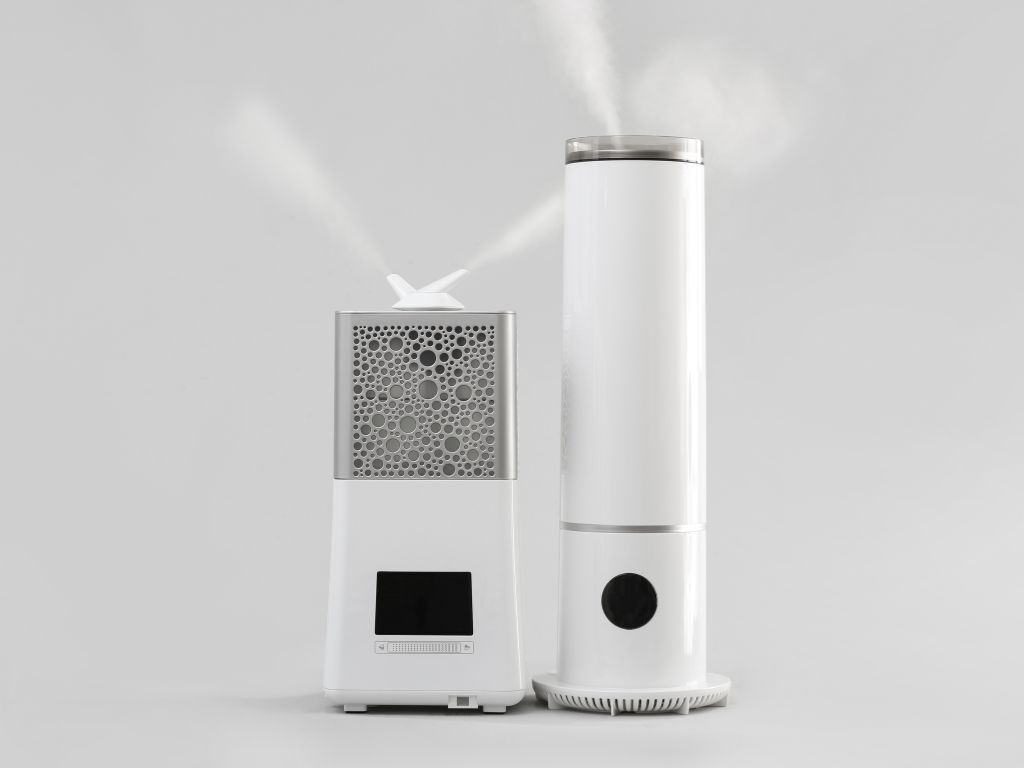
DIY Humidity Control Projects
Garage gardeners can implement cost-effective DIY projects and hacks to regulate humidity levels in their indoor gardening environments. These homemade solutions are easy to create and can be tailored to the specific needs and constraints of garage setups. The following are some DIY projects and hacks for controlling humidity:
DIY terracotta pot humidifier
Materials needed
Terracotta pot, saucer, water and cloth or sponge.
Instructions
– Fill the saucer with water and place it on a flat surface.
– Dip the cloth or sponge into the water to absorb moisture.
– Place the terracotta pot upside down over the saucer, making sure the cloth or sponge is in contact with the inside of the pot.
– As the water evaporates from the cloth or sponge, it will humidify the air inside the pot, creating a microclimate of increased humidity around nearby plants.
DIY Humidity Tray
Materials needed
Shallow tray or bowl, gravel or pebbles, water.
Instructions
– Fill the tray or bowl with a layer of gravel or pebbles, making sure it covers the bottom evenly.
– Add water to the tray, just enough to partially submerge the gravel.
– Place potted plants on the gravel-filled tray, making sure the bottoms of the pots do not touch the water.
– As the water evaporates from the surface of the gravel, it will increase the humidity level around the plants, providing a natural and cost-effective method of controlling humidity.
DIY moisture barrier
Materials needed
Plastic sheeting or landscape fabric, stakes or clips.
Instructions
– Cut the plastic or landscape fabric into strips or panels large enough to cover the soil surface around the potted plants.
– Lay the plastic or landscape fabric over the soil surface, ensuring that it extends beyond the edges of the pots.
– Secure the barrier in place with stakes or staples to ensure it remains flat and taut over the soil.
– The moisture-retaining barrier helps reduce evaporation from the soil surface, maintaining higher humidity levels around the plants and conserving water.
DIY natural evaporative cooler
Materials needed
A large clay or ceramic pot, water and a fan.
Instructions
– Fill the clay or ceramic pot with water to about half full.
– Place the pot in front of a fan, positioning it so that the airflow passes over the surface of the water.
– As the fan blows air over the water-filled pot, the moisture will evaporate into the surrounding air, increasing the humidity in the garage garden room.
– This DIY evaporative cooler can be used to supplement existing humidity control measures, providing a natural and energy efficient method of humidity control.
Plant-Specific Considerations
Different plant species respond differently to changes in humidity, influenced by their native habitats, physiological characteristics and evolutionary adaptations. Understanding how different plants respond to changes in humidity is essential for greenhouse gardeners to provide optimal growing conditions and promote healthy growth and development. The following are some insights into how different plant species respond to changes in humidity and recommendations for adjusting humidity levels accordingly:
Tropical plants (high humidity)
– Tropical plants, which are native to humid environments such as rainforests, thrive in high humidity conditions.
– Symptoms of inadequate humidity in tropical plants may include wilting, leaf browning or tip burn.
Recommendations
– Maintain humidity levels between 60% and 80% for tropical plants using humidifiers or natural humidification methods such as misting or grouping plants.
– Ensure proper airflow and ventilation to prevent stagnant air and fungal problems.
– Monitor closely for signs of moisture stress and adjust humidity levels as needed, especially during dry periods or winter months.
Desert plants (low humidity)
– Desert plants, adapted to arid, low humidity environments, have specialised mechanisms to conserve water and tolerate dry conditions.
– Symptoms of excessive humidity in desert plants may include root rot, fungal diseases or stunted growth.
Recommendations
– Maintain lower humidity levels between 30% and 50% for desert plants, using dehumidifiers or natural ventilation methods to reduce moisture in the air.
– Avoid overwatering and ensure that the soil drains well to prevent waterlogging and root rot.
Provide adequate airflow around plants and avoid overcrowding to minimise humidity build-up and promote air circulation.
Temperate plants (moderate humidity)
– Temperate plants, which are adapted to the moderate humidity found in temperate climates, have a wide range of tolerance to humidity fluctuations.
– Symptoms of humidity-related stress in temperate plants may vary from species to species, but may include leaf curling, wilting or yellowing.
Recommendations
– Maintain moderate humidity levels between 40% and 60% for temperate plants, adjusting as needed based on species preferences and environmental conditions.
– Monitor plant responses closely for signs of stress and adjust humidity levels accordingly to maintain optimum growing conditions.
– Provide adequate moisture through regular watering and mulching, while ensuring good drainage to prevent waterlogging.
Epiphytic plants (variable humidity)
– Epiphytic plants, such as orchids and bromeliads, naturally grow in a variety of habitats, from humid rainforests to drier environments.
– These plants often have specialised adaptations to absorb moisture from the air and can tolerate a wide range of humidity levels.
Recommendations
– Research the specific requirements of individual epiphytic plant species to determine optimal humidity ranges and growing conditions.
– Provide regular misting or humidification to supplement moisture for epiphytic plants, especially during dry periods or in low humidity environments.
– Monitor plant health and adjust humidity levels based on species response, looking for signs of dehydration or excessive moisture stress.
Seasonal Adjustments
Seasonal changes have a significant impact on humidity levels in the conservatory, presenting challenges and opportunities for gardeners who want to maintain optimal growing conditions throughout the year. Understanding how humidity fluctuates with the seasons and making adjustments accordingly is essential to ensuring the health and vitality of indoor plants. The following is a discussion of seasonal changes in humidity and recommendations for garage gardeners to adjust accordingly:
Spring
– Spring brings rising temperatures and humidity as the weather transitions from winter to summer.
– Humidity levels can gradually increase as the outdoor air becomes warmer and more humid, affecting the indoor environment.
Recommendations
– Monitor humidity levels closely as temperatures rise, especially in enclosed garage spaces that are prone to heat build-up.
– Increase ventilation and airflow by opening windows or using fans to prevent humidity build-up and stagnant air.
– Adjust watering schedules as needed, remembering that higher humidity levels can slow evaporation rates and affect soil moisture levels.
Summer
– Summer typically brings the highest humidity levels, especially in regions with hot and humid climates.
– High humidity combined with high temperatures can create challenging conditions for indoor plants, increasing the risk of fungal diseases and moisture-related problems.
Recommendations
– Use dehumidifiers or air conditioners to control indoor humidity levels, especially during peak summer months.
– Ensure proper airflow and ventilation to prevent moisture build-up and reduce the risk of mould growth.
– Water plants early in the morning to allow excess moisture to evaporate during the day and reduce the risk of fungal infection.
Fall
– Fall sees a gradual drop in temperatures and humidity levels as the transition to cooler weather begins.
– Indoor environments may experience more stable humidity levels as the outdoor air becomes drier.
Recommendations
– Adjust humidity control devices such as humidifiers or dehumidifiers to maintain optimal humidity levels as outdoor conditions change.
– Monitor plants closely for signs of stress as humidity levels fluctuate, especially during transitional periods.
– Consider slightly increasing humidity levels for moisture-loving plants as the outdoor air becomes drier, using natural methods such as misting or humidifiers.
Winter
– Winter brings colder temperatures and lower humidity levels, especially in regions with dry winter climates or indoor heating systems.
– Low humidity combined with indoor heating can lead to excessively dry conditions, causing moisture stress and dehydration in plants.
Recommendations
– Use humidifiers to maintain adequate indoor humidity levels, especially in heated garages where the air tends to be dry.
– Group plants together to create microclimates of higher humidity and reduce moisture loss through transpiration.
– Avoid placing plants near heating vents or sources of dry air to prevent excessive moisture loss and maintain plant health.
Preventing Mould and Pests
High humidity levels in garage gardening environments can create favourable conditions for mould and pest infestations, posing risks to plant health and the sustainability of the indoor garden. To mitigate these problems, garage gardeners should implement preventive measures and remedies tailored to effectively address mould and pest problems. The following is how you can tackle these challenges:
Risk of mould and pest infestation
Mould growth
– High humidity levels promote the growth of mould on plant foliage, soil surfaces and indoors.
– Mould can cause a variety of problems, including leaf discolouration, stunted growth and respiratory problems in both plants and people.
Pest infestation
– High humidity attracts pests such as fungus gnats, aphids and spider mites, which thrive in damp environments.
– Pest infestations can damage plant foliage, weaken plant health and spread disease, leading to reduced productivity and vitality in indoor gardens.
Preventive measures and remedies
Maintain optimum humidity levels
– Regularly monitor and control humidity levels within the recommended range (typically 40% to 60%) using humidifiers, dehumidifiers or natural methods.
– Ensure proper ventilation and airflow to prevent moisture build-up and stagnant air pockets, reducing the risk of mould growth and pest infestation.
Promote air circulation
– Use fans or ventilation systems to improve air circulation in the garage gardening area, minimising moisture build-up and creating inhospitable conditions for mould and pests.
– Place fans strategically to ensure even airflow around plants and throughout the room, targeting areas prone to moisture build-up and stagnant air.
Water management
– Practice good watering techniques, watering plants at the base to avoid excessive wetting of foliage and soil surfaces.
– Allow the soil to dry out between waterings to avoid waterlogged conditions and reduce the risk of mould growth and root rot.
– Use self-watering pots or bottom-watering methods to minimise moisture on plant foliage and surfaces.
Maintain cleanliness
– Regularly clean and disinfect gardening tools, containers and surfaces to remove mould spores, pest eggs and debris that can harbor pests and pathogens.
– Dispose of dead or rotting plant material promptly to prevent fungal growth and pest infestations from spreading to healthy plants.
Natural remedies
– Use natural remedies such as neem oil, insecticidal soap or diatomaceous earth to control pest infestations without harsh chemicals.
– Apply beneficial microbes or biological control agents to the soil to suppress fungal pathogens and promote a healthy microbial balance.
Monitor and spot early signs
– Monitor plants regularly for early signs of mould growth, pest infestation or plant stress, such as yellowing leaves, leaf spots or abnormal growth patterns.
– Take immediate action to deal with any problems that are detected, including adjusting humidity levels, removing affected plant parts or applying targeted pest control.
Humidity Troubleshooting
Common humidity problems in greenhouse horticulture can be caused by environmental factors such as poor ventilation, temperature fluctuations and seasonal changes. These problems can affect plant health and productivity if left unaddressed. The following is an overview of common humidity-related problems and troubleshooting tips on how to deal with them effectively:
Common humidity related problems
Condensation
– Condensation occurs when warm, humid air comes into contact with cooler surfaces, causing moisture to accumulate and form droplets on walls, windows or plant foliage.
– Excessive condensation can create damp conditions conducive to mould growth and increase the risk of fungal disease in plants.
Dry air
– Dry air occurs when humidity levels are too low, resulting in moisture loss from plant foliage and soil surfaces.
– Dry air can lead to dehydration, wilting and stress in plants, especially those native to humid environments.
Troubleshooting tips
Improve ventilation
– Ensure proper airflow and ventilation in the shed to reduce moisture build-up and stagnant air.
– Use fans or ventilation systems to promote air circulation and prevent condensation by moving humid air away from cooler surfaces.
Use dehumidifiers
– Install dehumidifiers to remove excess moisture from the air and maintain optimal humidity levels within the recommended range (40% to 60%).
– Strategically place dehumidifiers in areas prone to moisture build-up, such as corners or near water sources, to effectively control humidity levels.
Address insulation issues
– Improve insulation in the garage area to minimise temperature fluctuations and reduce the risk of condensation forming on walls or windows.
– Seal gaps or cracks around doors, windows and vents to prevent cold draughts and moisture infiltration from the outside.
Monitor humidity levels
– Use humidity monitoring tools such as hygrometers or smart sensors to accurately track humidity levels and identify potential problems.
– Adjust humidity control devices, such as humidifiers or dehumidifiers, based on monitoring data to maintain stable humidity levels throughout the year.
Avoid overwatering
– Practice good watering techniques and allow the soil to dry out between waterings to prevent waterlogging and minimise moisture build-up.
– Avoid splashing water on plant foliage and surfaces as excess moisture can contribute to condensation and fungal growth.
Use natural methods to control humidity
– Use natural methods to regulate humidity, such as grouping plants with similar moisture requirements, using moisture trays, or strategically placing water sources to promote evaporation.
– Incorporate moisture-retaining barriers or mulching techniques to reduce moisture loss from soil surfaces and maintain higher humidity levels around plants.
Monitor for signs of mould or pest infestation
– Inspect plants regularly for signs of mould growth, such as fuzzy white or black spots on leaves or soil surfaces.
– Check for pest infestations, such as fungus gnats, aphids or spider mites, and take prompt action to control them using natural or chemical methods.
Throughout this journey, we’ve explored the intricate interplay between humidity levels and plant health, and the importance of maintaining optimal conditions within the confines of the garage environment. From the challenges of fluctuating humidity levels to the varying responses of different plant species, garage gardeners have gained valuable insights into the art and science of humidity control. We’ve uncovered a wealth of techniques, from natural methods such as strategic plant grouping and proper watering practices, to mechanical solutions such as humidifiers and dehumidifiers, each offering unique ways to create and maintain balanced indoor ecosystems.
As we conclude this exploration, let us take the lessons learned and embark on our own unique paths to moisture harmony in garage gardening. Armed with knowledge, ingenuity and a deep reverence for the natural world, let us cultivate not only thriving gardens, but thriving souls within the humble confines of our garage sanctuaries. For amidst the greenery we find solace, inspiration and the timeless beauty of life itself.
